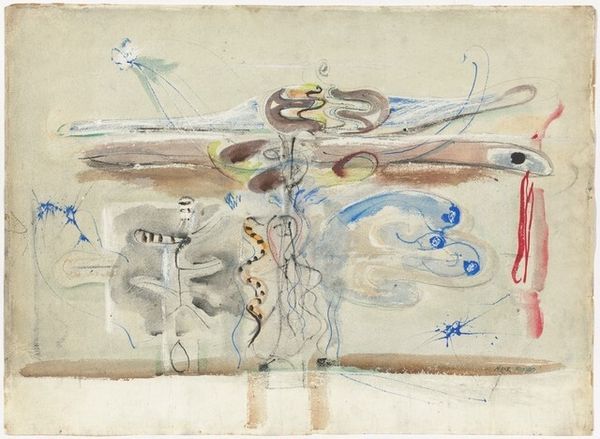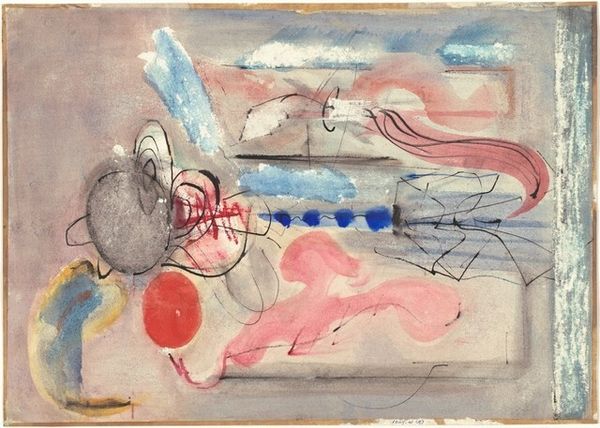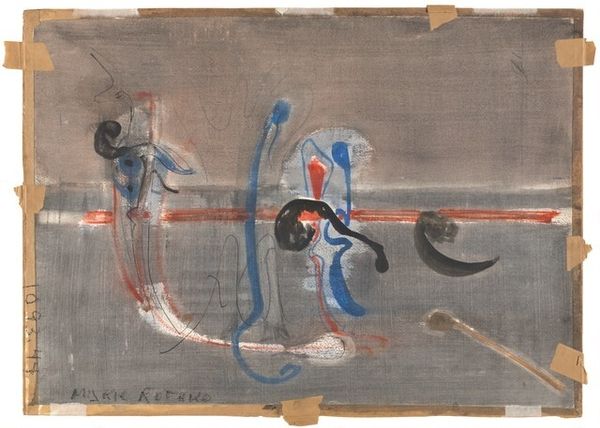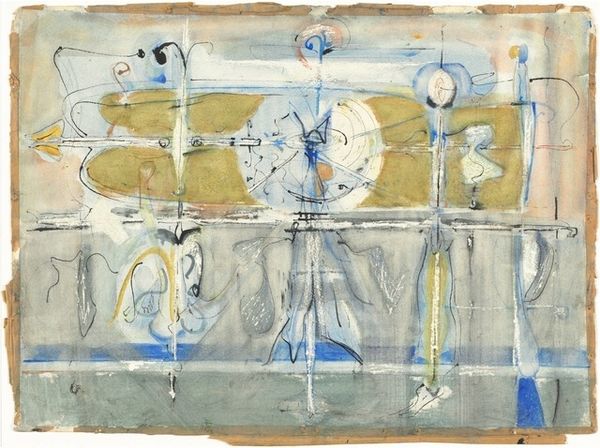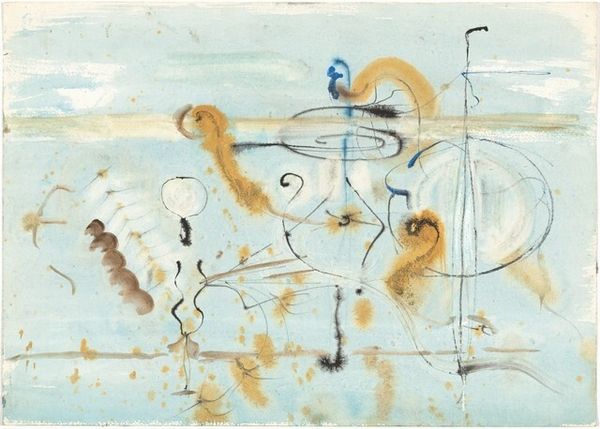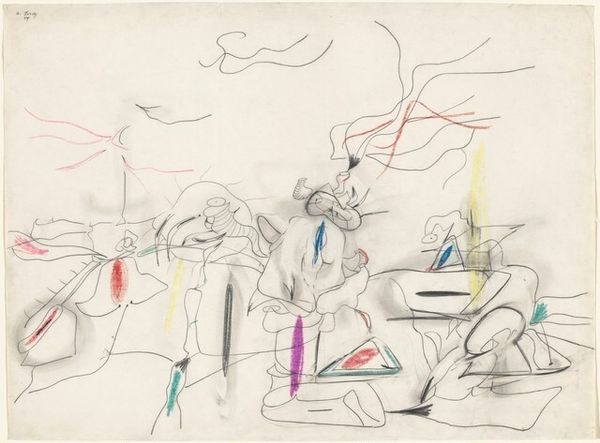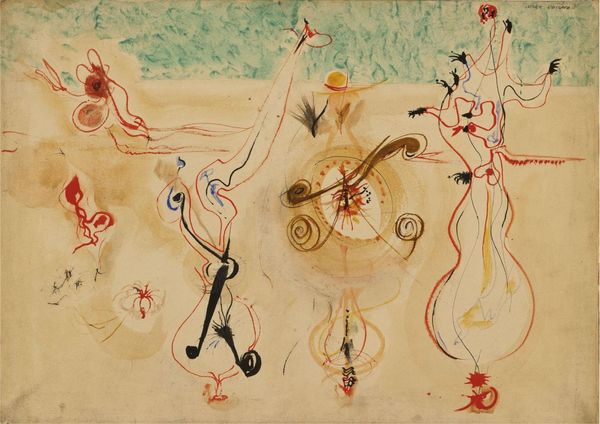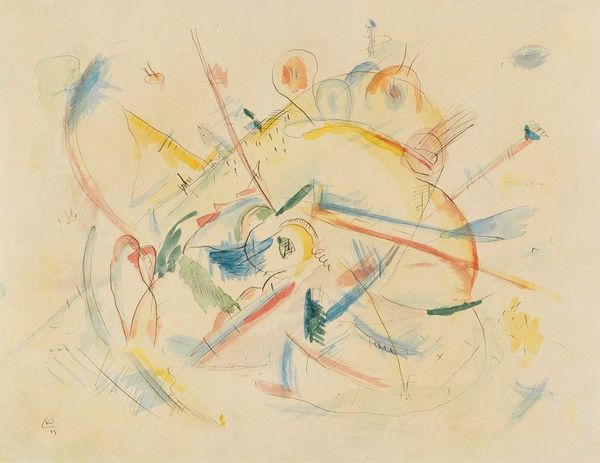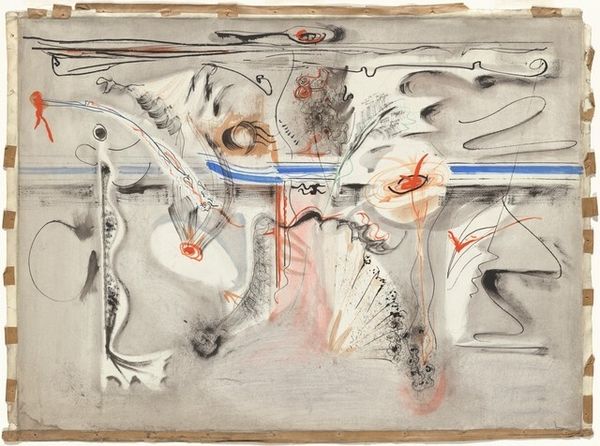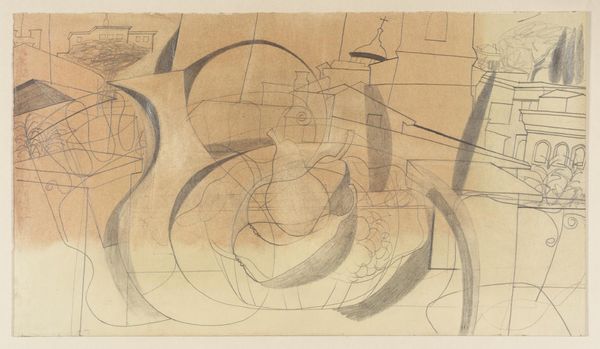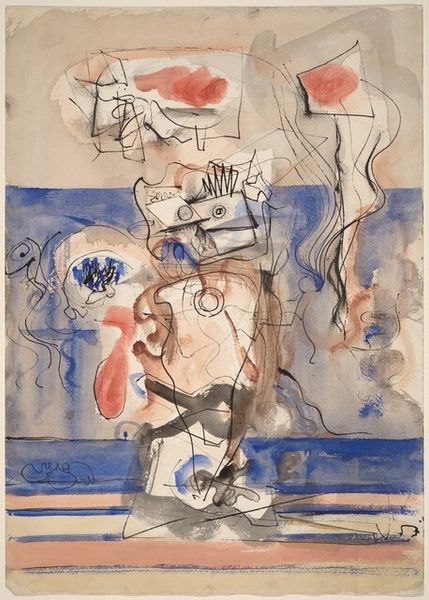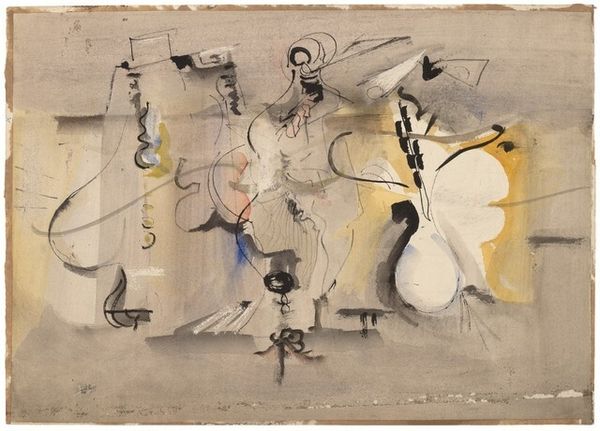![Untitled [recto] by Mark Rothko](/_next/image?url=https%3A%2F%2Fd2w8kbdekdi1gv.cloudfront.net%2FeyJidWNrZXQiOiAiYXJ0ZXJhLWltYWdlcy1idWNrZXQiLCAia2V5IjogImFydHdvcmtzLzJlODU1Y2RjLTE0NmUtNDE2Ny05ZjBiLTU0NDc1MGJlYjZlOS8yZTg1NWNkYy0xNDZlLTQxNjctOWYwYi01NDQ3NTBiZWI2ZTlfZnVsbC5qcGciLCAiZWRpdHMiOiB7InJlc2l6ZSI6IHsid2lkdGgiOiAxOTIwLCAiaGVpZ2h0IjogMTkyMCwgImZpdCI6ICJpbnNpZGUifX19&w=1920&q=75)
drawing, coloured-pencil, watercolor
#
gouache
#
abstract-expressionism
#
drawing
#
coloured-pencil
#
water colours
#
watercolor
#
coloured pencil
#
abstraction
Dimensions: overall: 55 x 75.5 cm (21 5/8 x 29 3/4 in.)
Copyright: National Gallery of Art: CC0 1.0
Editor: We're looking at Mark Rothko's "Untitled (recto)" from around 1944-1946. It's made with watercolor, gouache, and colored pencil on paper. The colours are gentle, predominantly blues and whites. What's most striking to me is the sketchiness; it feels very provisional, like we're seeing the process of creation. What do you see in this piece? Curator: I'm drawn to that sense of provisionality as well. The layering of media – watercolour washes, denser gouache, and the mark-making of coloured pencil – speaks to Rothko's evolving approach to abstraction during this period. How does this interplay of materials challenge the established artistic conventions of the time, specifically in regards to high art versus craft? Editor: That's interesting! I hadn't really considered how the "craft" element comes into play here. Is it because of the visible layers and different mediums used? Curator: Exactly. The use of these 'lesser' media and the exposed working process destabilizes the idea of the artwork as a singular, transcendent object, something untouched by labor. It reminds us that art is made, crafted, and therefore linked to a specific moment of production and the conditions surrounding it. Think about how wartime rationing may have impacted his material choices. Editor: So the work's "unfinished" quality highlights the labour and materials that went into it, and the socio-economic context... Curator: Precisely. It invites us to think about the materiality of art and its connection to a wider network of production and consumption during that period. Editor: I never really considered the artwork this way, thanks. I am going to look for materiality and the traces of production now, and maybe I will like abstraction even more. Curator: Wonderful. Understanding these processes makes it easier to connect with and better analyze abstraction's intent and meaning.
Comments
No comments
Be the first to comment and join the conversation on the ultimate creative platform.
